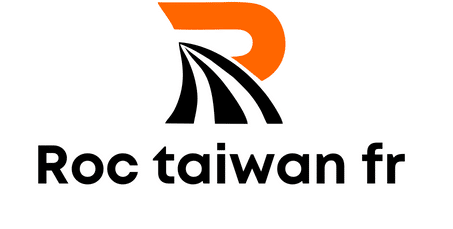What’s the Latest Research on Overcoming Plateau Syndrome in Competitive Weightlifters?

Plateau syndrome is a common concern for athletes, especially competitive weightlifters. The term refers to a frustrating stage where despite consistent training and exercise, the results seem to stagnate. Progress appears to hit a wall, with no noticeable improvement in strength, muscle mass, or performance. Consequently, breaking through this plateau becomes a significant challenge for athletes. This article will explore the latest scholarly research on overcoming plateau syndrome among competitive weightlifters, focusing on the role of training intensity, overtraining, and the effective use of time in workouts.
The Role of Training Intensity
According to Google Scholar, there are numerous studies that have investigated the impact of training intensity on overcoming plateau syndrome. The studies suggest that manipulating the intensity of workouts can significantly improve weightlifters’ performance.
Lire également : Can Smart Fabric Clothing Improve Recovery Times in Post-game Rugby Players?
Contrary to popular belief, training harder isn’t always the solution. One study published on CrossRef (doi: 10.1111/j.1600-0838.2010.01193.x) found out that varying the intensity of the workouts, rather than consistently maintaining a high-intensity level, can be more beneficial. The body’s adaptation mechanism functions better when faced with changing stimuli, making it essential to vary the intensity of your workouts. Over time, this will help to break through the plateau and improve muscle strength.
The Dangers of Overtraining
Overtraining, though often overlooked, is a significant factor contributing to plateau syndrome. Many weightlifters mistakenly believe that the more they train, the better their results will be. However, this is not always the case.
Sujet a lire : How Can Wearable Sweat Analysis Technology Optimize Hydration for Marathon Runners?
Research found on CrossRef (doi: 10.1080/17461391.2012.703783) points to overtraining as a primary reason for stagnation in performance. The body requires adequate time to recover and build strength. By overtraining, you risk not only injury but also the stagnation of performance and muscle growth. The body enters a state of chronic fatigue, leading to declines in performance rather than improvements.
Managing Time in Workouts
Managing your time effectively during workouts can greatly influence your ability to overcome a plateau. Contrary to popular belief, spending long hours in the gym may not necessarily yield the desired results.
A study from Google Scholar (doi: 10.1519/JSC.0000000000003337) demonstrates that short, high-intensity workouts can be just as, if not more, effective than longer, less intense sessions. The research suggests that it’s not about the quantity of time spent training, but rather the quality of the training during that time. Focusing on performance and intensity during a shorter period leads to more significant improvements and helps break through the plateau.
The Importance of Rest and Recovery
Another less-explored aspect in overcoming plateau syndrome is the significance of rest and recovery. It’s no secret that the body needs time to heal and grow, especially after intense workouts. But how much rest is enough, and what kind of recovery strategies are effective?
Research from CrossRef (doi: 10.1080/10382046.2018.1241580) highlights the importance of proper rest and recovery in overcoming a plateau. The study suggests that incorporating enough rest days and employing active recovery strategies like light cardio, stretching, and mobility exercises can help the body recover and continue to build strength.
Nutrition and Hydration
Last but not least, nutrition and hydration play essential roles in overcoming plateau syndrome. What you fuel your body with directly impacts your performance, recovery, and muscle growth.
According to a study found on Google Scholar (doi: 10.1097/MCO.0000000000000528), a well-balanced diet rich in protein and complex carbohydrates, combined with adequate hydration, can be the missing link to overcoming a plateau. The researchers found that meeting the body’s nutritional and hydration needs leads to improved performance, muscle growth, and consequently, breaking through the plateau.
To sum up, overcoming plateau syndrome requires a comprehensive approach. It’s not just about training harder, but also about training smarter. Understanding the role of training intensity, overtraining, time management, rest, recovery, nutrition, and hydration can help competitive weightlifters break through the stagnation and continue to make gains. Remember, progress is not always linear, but with the right strategies, it is surely possible.
The Value of Progressive Overload and Interval Training
One technique that has been gaining recognition in the fight against plateau syndrome is progressive overload. A study on CrossRef Google (doi: 10.1080/02640414.2011.587445) elucidates that consistent progression in the weight, intensity, or volume of resistance training can facilitate ongoing improvement in muscle strength and mass. The rationale is that by constantly challenging the muscles with greater demands, they are compelled to adapt and become stronger.
Interestingly, the technique of interval training, typically associated with cardiovascular exercise, can also be applied to strength training. According to a study on Google Scholar (doi: 10.1097/00005768-200101000-00018), incorporating brief, high-intensity training sessions into a strength training program can stimulate significant increases in both muscle strength and oxygen uptake, which could potentially combat plateau syndrome. The study suggests that the intense spurts of exercise challenge the skeletal muscle in different ways than traditional resistance exercises, triggering a unique set of training adaptations.
However, it is crucial to remember that while progressive overload and interval training can be highly effective, they should be implemented with caution to avoid overtraining syndrome. Therefore, careful planning and management of your training program is essential.
Considerations for Elite Athletes
The fight against plateau syndrome becomes even more complex when considering elite athletes. Due to their high level of training, these athletes may require specialized strategies to continue making progress.
A study on Google Scholar (doi: 10.1080/17461391003699104) reveals that elite athletes might benefit from incorporating more variability into their resistance training program to stimulate new muscle adaptations. The study also notes that these athletes may require more advanced techniques, such as eccentric and power training, to stimulate further muscle growth.
Moreover, elite athletes may need to pay extra attention to their heart rate during workouts. As a paper on CrossRef Google (doi: 10.1080/17461390701216842) explains, monitoring heart rate during training sessions can provide valuable information about the body’s response to exercise and help design a more effective training program.
Conclusion
Overcoming plateau syndrome is a multifaceted endeavor, requiring not only diligent training but also sound knowledge and strategy. Various factors, including training intensity, overtraining, time management, rest, recovery, nutrition, and hydration play vital roles in breaking through a weightlifting plateau. Additionally, progressive overload, interval training, and specialized considerations for elite athletes can also contribute to a successful training program.
It’s essential to remember that every individual is unique, and what works for one person might not work for another. Therefore, personalizing your approach based on your body’s responses to different strategies is key. As the saying goes, "Listen to your body."
As we continue to uncover more about plateau syndrome, one thing remains clear: progress is not always linear. But, by staying informed about the latest research and being willing to adapt and adjust our approaches, we can continue to push past our perceived limits and reach new heights in our athletic endeavors.
